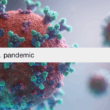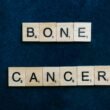
Understanding the complicated causes of cancer of the bone, a deadly condition affecting thousands worldwide, is essential for prevention and therapy. Genetics largely affects bone cancer, but various lifestyle variables also influence it. In this informative post, we look into the complex interaction between genetics and lifestyle decisions, illuminating bone cancer’s many different root causes. We seek to offer a thorough grasp of this puzzling condition by examining the most recent studies and technological advances. This article will arm you with the knowledge necessary to successfully traverse the complexity of this condition, whether you are a healthcare professional, a patient, or simply curious about the subtleties of bone cancer. Join us as we explore the mysteries of bone cancer and arm ourselves with the knowledge to make wise decisions for a healthier future.
Types and Classifications of Bone Cancer
Bone cancer is a complicated condition with many different forms and subtypes. Chondrosarcoma, Ewing sarcoma, and osteosarcoma are the three most prevalent kinds of bone cancer. Each type affects various age groups and has distinct characteristics. For instance, chondrosarcoma affects middle-aged and older people more frequently, while osteosarcoma primarily affects children and young adults. Accurate diagnosis and therapy of bone cancer depend on having a thorough understanding of the many types and classifications of the disease. It enables medical practitioners to customize their treatment based on the malignancy’s unique features, enhancing patient outcomes and quality of life.
Symptoms of Bone Cancer
Bone cancer and pain
Often, pain is the initial sign of bone cancer. It may be continuous or sporadic and get worse at night.
Inflammation and Bone Cancer
Another sign of bone cancer is swelling close to the damaged bone.
Bone cancer and fractures
Cancer can weaken the bone, making fractures more likely to happen than they normally would.
Causes of Cancer of the Bone
Genetics and Bone Cancer
Bone cancer development is significantly influenced by genetics. Several inherited genetic disorders, including Li-Fraumeni syndrome and hereditary retinoblastoma, increase bone cancer risk. Mutations in specific genes, such as TP53 and RB1, increase the chance of malignant bone growth. These mutations interfere with the normal control of the cell cycle. Additionally, genetic differences in drug-metabolizing enzymes may affect how well chemotherapy works in patients with bone cancer. Understanding the hereditary risk factors for bone cancer aids in identifying those who are more susceptible and directs treatment choices for better results.
Environmental Factors and Bone Cancer
Environmental factors and genetics play a role in the emergence of bone cancer. Bone cancer risk has been linked to exposure to some substances, including radioactive elements and toxins like benzene. Ionizing radiation from medical procedures like radiation therapy for other tumors can also raise the risk of bone cancer. An increased risk of bone cancer has also been linked to occupational exposure to chemicals like asbestos and heavy metals. To lower the incidence of bone cancer, it is essential to be aware of and reduce exposure to these environmental factors.
Lifestyle Factors and Bone Cancer
A person’s lifestyle decisions may affect their chance of developing bone cancer in addition to genetics and environmental variables. For instance, smoking has been connected to a higher risk of several malignancies, including bone cancer. Since of the dangerous chemicals in tobacco smoke, it is more likely that cancer will develop since they can harm DNA and interfere with biological processes. Similarly, heavy alcohol use has been linked to a higher chance of developing bone cancer. A healthy lifestyle that includes regular exercise, a balanced diet, and abstaining from alcohol and cigarette use can help lower the chance of developing bone cancer and improve general health.
The Role of Diet and Nutrition in Bone Cancer
Diet and nutrition are essential for preserving bone health and lowering the chance of developing bone cancer. A diet high in calcium, vitamin D, and other necessary minerals supports healthy bones and reduces the risk of bone-related illnesses. Calcium is best obtained via dairy products, leafy greens, and fortified foods. Sunlight exposure also helps the body make vitamin D. Additionally, including foods high in antioxidants can help shield cells against DNA deterioration and lower the risk of cancer. Maintaining ideal bone health necessitates making wise food decisions and ensuring enough nutrient intake.
Occupational Hazards and Bone Cancer
Due to exposure to toxic materials, some professions carry an increased risk of developing bone cancer. Workers in mining, agriculture, and construction sectors could be exposed to poisons, radiation, and chemicals that raise the risk of developing bone cancer. For instance, asbestos exposure is a known occupational risk factor for bone cancer. Strict safety regulations, suitable safety equipment, and routine health examinations are crucial in reducing workplace risks and safeguarding employees from developing bone cancer.
Radiation and Bone Cancer
Despite being an effective treatment for many tumors, radiation therapy occasionally raises the risk of acquiring bone cancer. Radiation used to treat cancer can harm healthy and cancerous cells, which increases the risk of subsequent malignancies, such as bone cancer. The risk varies according to elements like the radiation dosage received, the body part treated, and the age at which radiation therapy was given. Medical specialists carefully weigh radiation therapy’s advantages and hazards to achieve the best results while lowering the long-term chance of developing bone cancer.
Diagnosing Cancer of the Bone
A thorough strategy comprising imaging studies, biopsies, and laboratory investigations is necessary to diagnose bone cancer. X-rays, CT scans, and MRI scans are frequently employed to see the afflicted bone and determine the severity of the disease. A biopsy, which involves taking a tiny tissue sample for analysis, is necessary to determine whether cancer cells are present. Genetic testing and laboratory analyses assist in identifying the precise type of bone cancer and direct treatment choices. Early and correct diagnosis is essential to deliver timely and suitable therapy and increase the likelihood of successful outcomes.
Treating Cancer of the Bone
The type and stage of cancer and the patient’s general condition are among the variables that affect how bone cancer is treated. Surgery, chemotherapy, radiation therapy, targeted therapy, and immunotherapy are all possible forms of treatment. As much healthy bone as possible will be preserved when the malignant cells are removed during surgery. Chemotherapy, radiation treatment, and targeted therapy are frequently combined to eliminate cancer cells and stop their spread. Immunotherapy is a promising method of cancer treatment utilizing the immune system to combat cancer cells. Individualized treatment programs created in partnership with a diverse team of medical experts for patients with bone cancer guarantee the greatest results.
Preventing Cancer of the Bone
While bone cancer cannot always be avoided, various precautions can help lower the risk. The probability of acquiring bone cancer is decreased by regular exercise, a good diet, abstaining from tobacco use, and excessive alcohol intake. In professions with workplace hazards, exposure to dangerous substances can be reduced by engaging in safe work practices and adhering to the necessary safety procedures. In addition, routine examinations and screenings are crucial for identifying bone cancer at an early stage, when therapy is frequently more successful. People can take control of their health and lower their risk of developing bone cancer by taking a proactive attitude to bone health and putting preventive measures in place.
Frequently Asked Questions:
Can Bone Cancer be cured?
Yes, bone cancer can be cured, especially if it is detected and treated early.
What is the survival rate for Bone Cancer?
The survival rate for bone cancer depends on several factors, including the type of cancer, stage at diagnosis, and the patient's overall health.
Conclusion
Genetics, environmental variables, and dietary habits are just a few of the complicated diseases that have several causes, including bone cancer. It is essential to comprehend the complex interactions between these variables to prevent, identify, and cure bone cancer. People can choose a healthy future by staying current on recent research and scientific developments. This article has given you the knowledge necessary to understand the complexity of bone cancer, whether you are a healthcare professional, a patient, or simply interested in learning more about it. Let’s work together to continue understanding the mysteries of bone cancer and create a world where everyone can access effective prevention and treatment.



